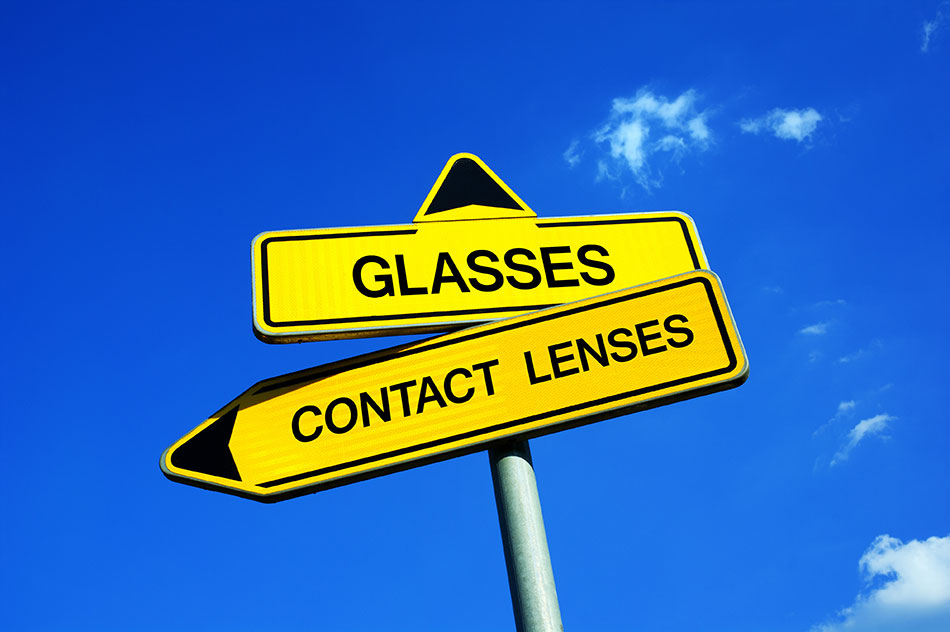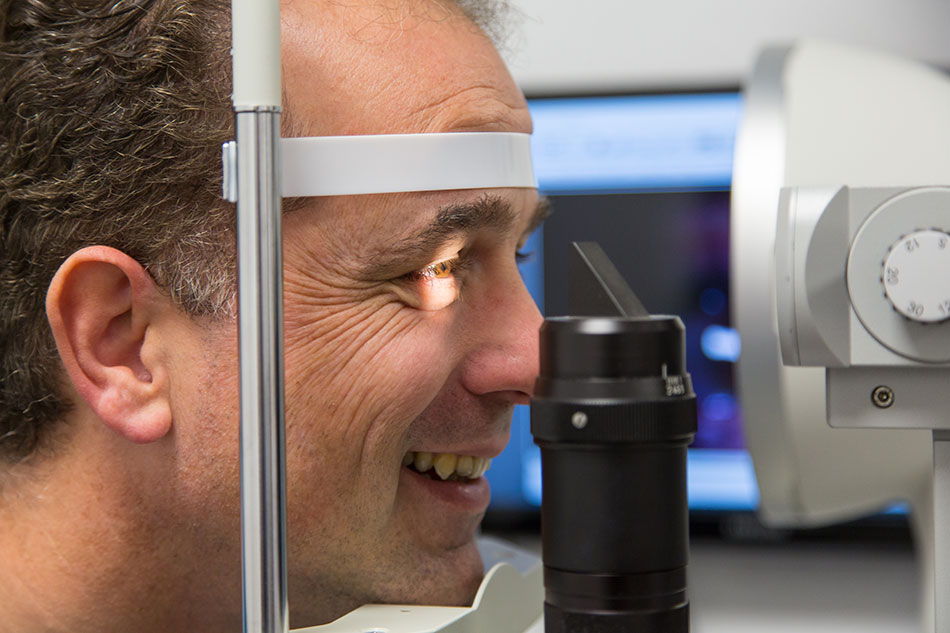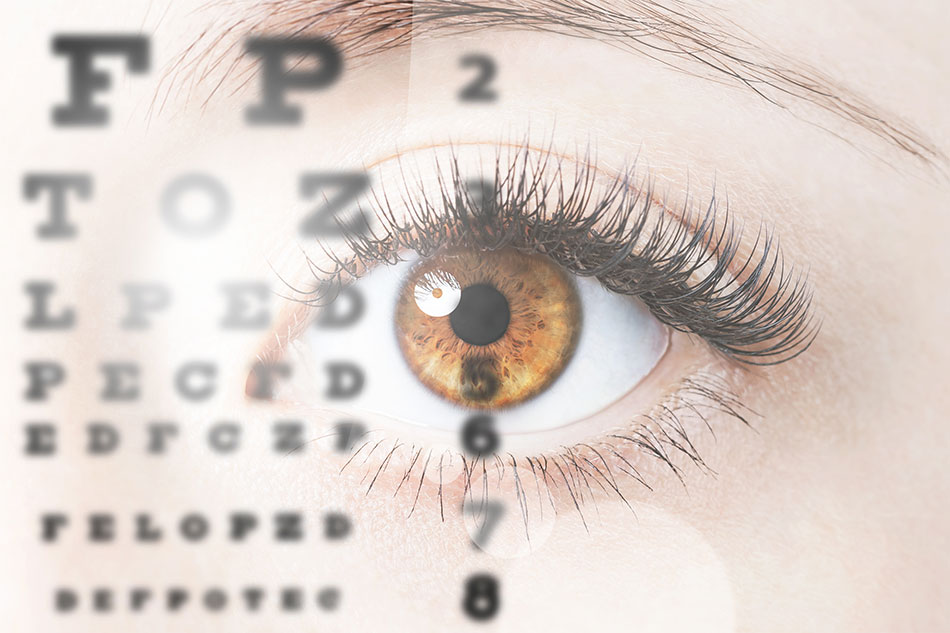What’s the Difference Between a Contact Lens Exam and a Glasses Exam?

Contacts and glasses aren’t one and the same, so why would their exams be? While you’d expect to go through the same testing for both, there’s actually a difference. An optometrist must conduct a series of extra exams to determine if contact lenses are right for you.
To help you learn about both types of tests, we’ve outlined the all-important differences between a contact lens exam and a glasses exam. That way, you’ll never feel nervous about a visit to the optometrist again.
A Comprehensive Eye Exam

To understand how a contact lens exam differs from a comprehensive eye exam, we need to understand what each entails. To begin with, a comprehensive eye exam checks the entire ocular system. Some people think eye exams are only necessary if some form of vision correction is needed, but that’s incorrect. While eye exams detect vision problems, they also catch diseases and disorders. Early detection is key in treating conditions like glaucoma, cataracts and macular degeneration.
It’s important to get regular eye checkups. During a comprehensive eye exam, your eye doctor can even find problems in other places other than your eyes. Diseases like diabetes and high blood pressure can affect the whole body in serious ways.
What to Expect
According to the Canadian Association of Optometrists, comprehensive eye exams may include:
- A discussion of your family medical history and your own past and present medical issues.
- A discussion of your vision needs, based on your work and lifestyle.
- A measurement of visual acuity in each eye, both near and far. The optometrist can then determine the prescriptions for both.
- A binocular vision assessment to see how your eyes work together for perception, movement and coordination. You will probably have a colour vision evaluation as part of this testing.
- An assessment of your eyes’ health will be carried out using a biomicroscope and ophthalmoscope. Your doctor may have to dilate your eyes.
- A neurological assessment of your ocular system. This will test pupil reactions, ocular mobility and quality of your peripheral vision.
- Glaucoma screening using a machine that tests the pressure inside the eye with a puff of air.
Any extra testing done is based on the results of these exams. If the optometrist needs clarification on any potential areas of concern, he or she may conduct one or more of the following tests:
- Retinal photography
- Gonioscopy
- Ultrasound
- Corneal pachymetry
- Contrast sensitivity
- Optic nerve or macular scans
- Automated visual field testing
At the end of the examination, you may receive a prescription for eyeglasses. A glasses prescription will always be of a different power than a contact lens prescription, usually higher. The reason? Glasses sit farther away from your eyes than contacts do.
A Contact Lens Exam

If you’ve never had a comprehensive eye exam before, you may be surprised by the number of steps involved. Thinking about contact lenses? Then there are just a few more tests you need to get through.
Contact lens exams are more complex than eyeglass exams because the lenses sit directly on your eyes. For that reason, optometrists must spend time taking measurements of your eyes. It’s important that these numbers are precise, as they will be used to fit your contact lenses as comfortable as possible.
Your optometrist will measure the curvature of your cornea. This is the clear structure that covers your eye. He or she will also measure your pupil and iris size. The optometrist will then conduct a tear film evaluation. This test determines if you have adequate moisture in your eyes to wear contacts. Dry eye syndrome is a common but aggravating condition that can be pronounced in contact lens wearers. This test can also help your eye doctor advise you on which lenses would work best for you.
With the results of these exams, your optometrist can write a contact lens prescription that fits your eyes. Now, you can discuss different types of lenses and have a trial fitting.
Your First Contact Lens Trial

Choosing your first pair of contact lenses can leave you feeling overwhelmed. Do you want hard contacts or soft? Can you accommodate the daily routine of monthly or weekly lenses? Or are daily disposables more your speed, without a required cleaning regimen? Luckily, your optometrist can talk you through the many contact lens options. Step by step, he or she can help you come to a decision that works for you.
Your eye doctor may fit you with a trial pair of contacts that you can take home to wear for a week or two. During this time, you should pay close attention to how well the lenses fit. Also, make note of any differences or irregularities in your vision. If the contacts cause extreme discomfort or blurry vision at any point, remove them and visit your optometrist. Even if the lenses are working out fine, you should always return for your follow-up appointment.
There can be a bit of trial and error involved in choosing contact lenses. So you may need to go through a few different pairs before you get the right ones. This is completely normal.
Feel Free to Shop Around
With your prescription in hand and the right type of contacts in mind, you can buy your lenses from anywhere you wish. Government regulation protects contact lens users. The system ensures all contacts sold in Canada are safe and effective. Online lens retailers often offer better prices than your optometrist’s office does. Be sure to order from a reputable online contacts seller. Remember, the contact lenses you order must match your prescription perfectly.
So Is a Contact Lens Exam Different Than a Glasses Exam?
Now you know the answer is yes! You’re better prepared to go through some extra steps when visiting your eye doctor. This should leave you feeling confident about the differences between an exam for eyeglasses and an exam for contacts. If you still have questions or concerns, your eye doctor can clear the air for you, right before clearing your vision.
